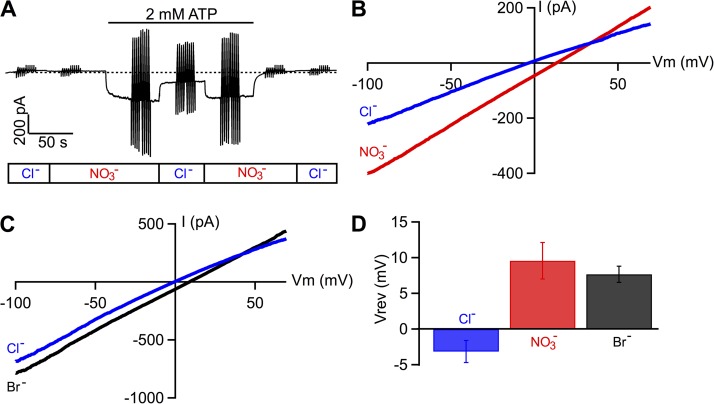Figure 1.
Comparisons of permeability and conductance ratios of macroscopic WT-CFTR currents among Cl−, Br−, and NO3−. (A) A real-time recording of macroscopic CFTR current showing the effect of cytoplasmic substitutions of anionic charge carriers. CFTR channels were preactivated by PKA-dependent phosphorylation. At a holding potential of −30 mV, the application of ATP in NO3− bath elicits an inward current, which is significantly reduced upon replacement of NO3− with Cl−, as marked in the rectangular box below the current trace. The vertical lines in A are current fluctuations that resulted from the voltage ramps. (B) Macroscopic I-V relationships for net CFTR conductance in the presence of bath Cl− or NO3−. Net CFTR currents were obtained by subtracting the current in the absence of ATP from ATP-induced current. (C) Macroscopic I-V relationships for CFTR conductance in the presence of bath Cl− or Br−. These I-V curves were obtained from an experiment similar to the one depicted in A. (D) Summary of the reversal potential values in different baths as indicated. The error bars represent the SEM of the mean.

